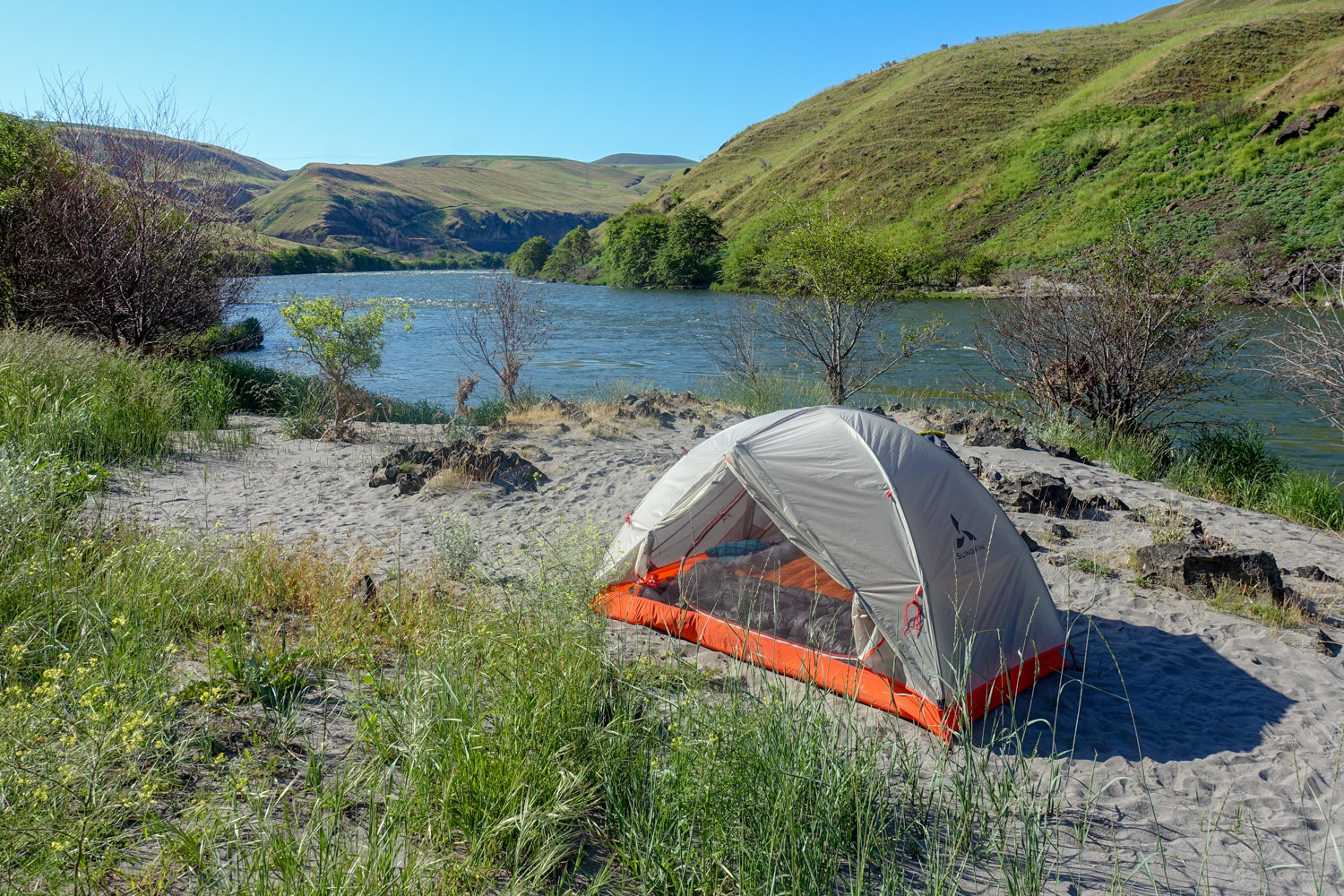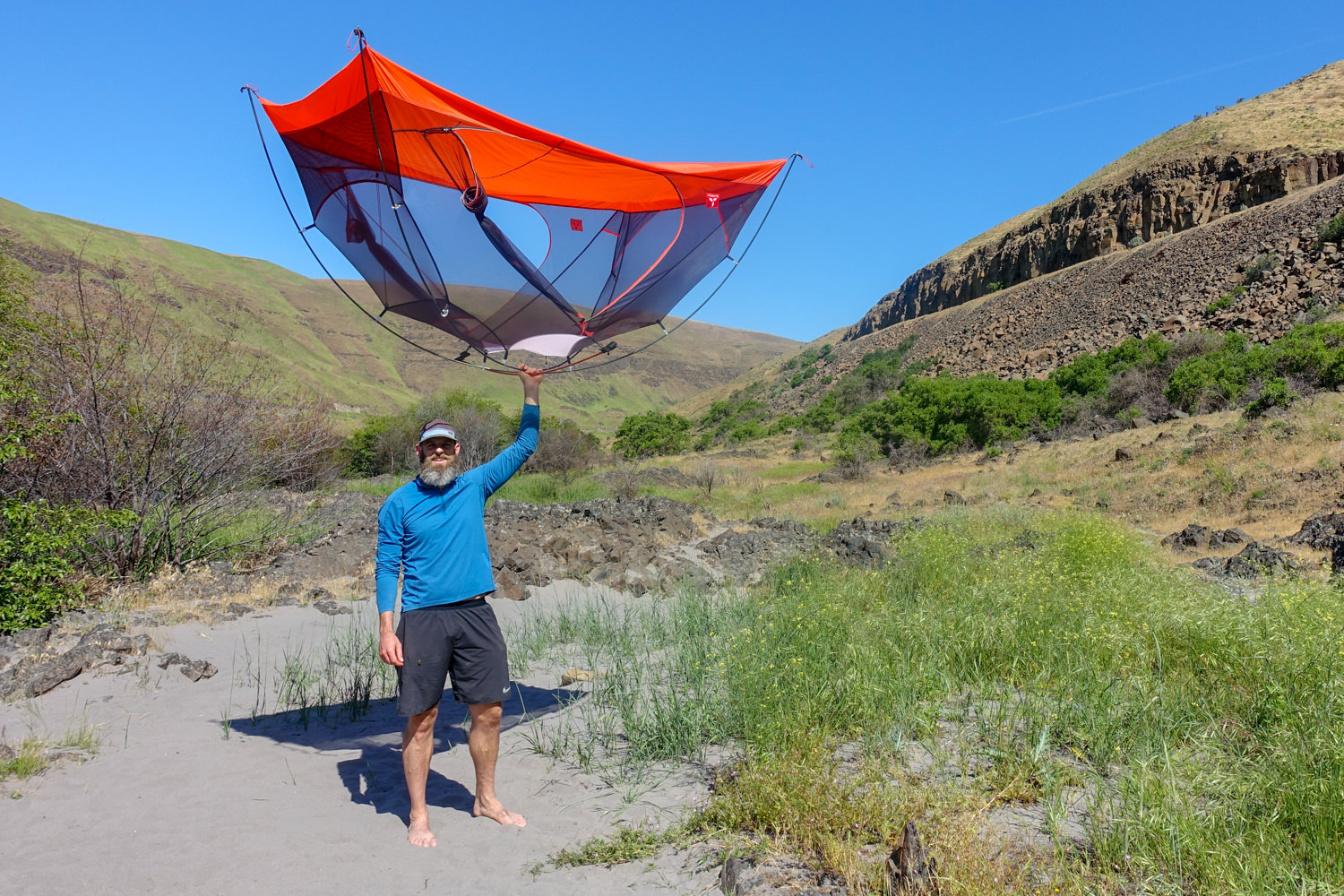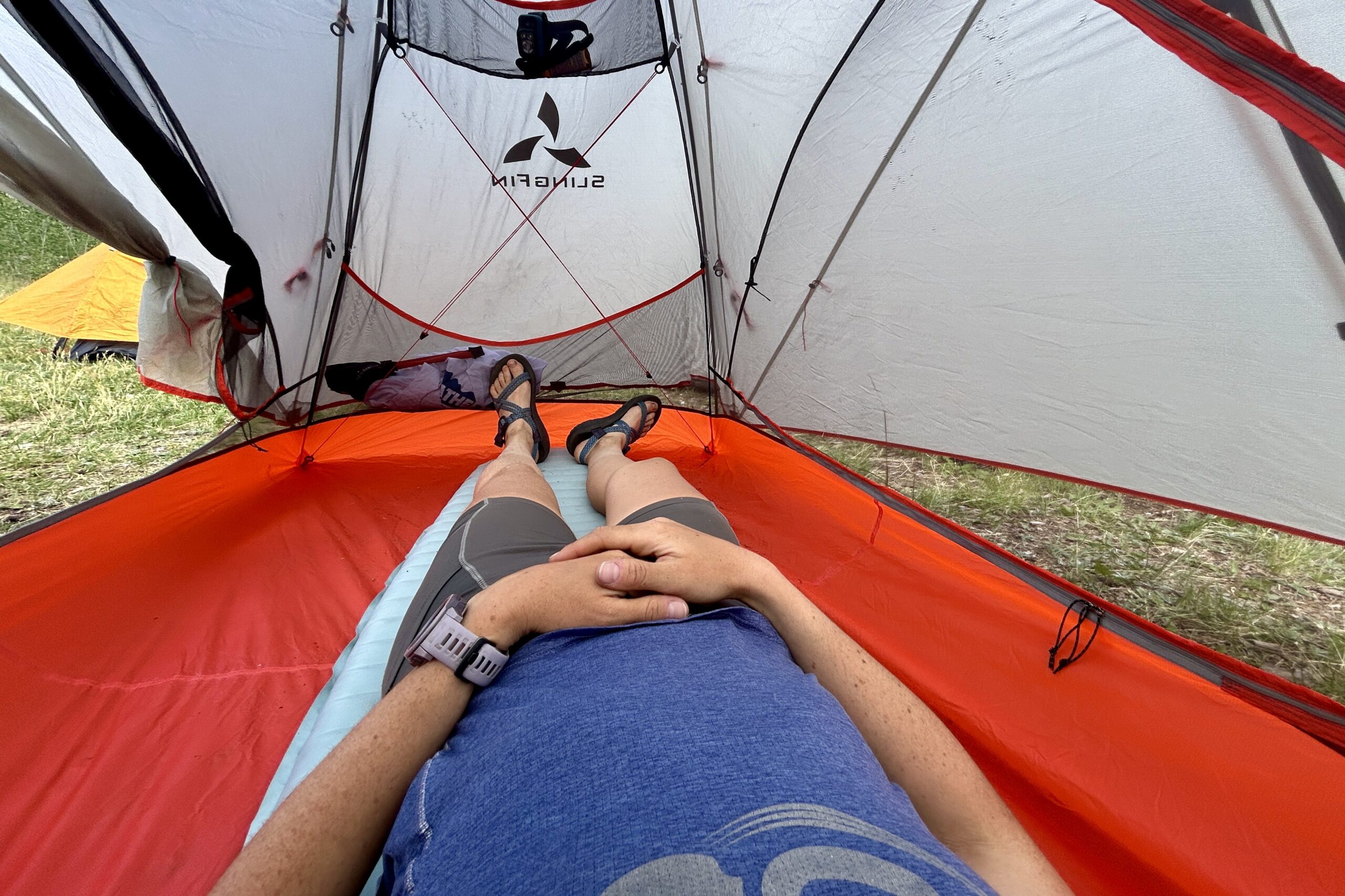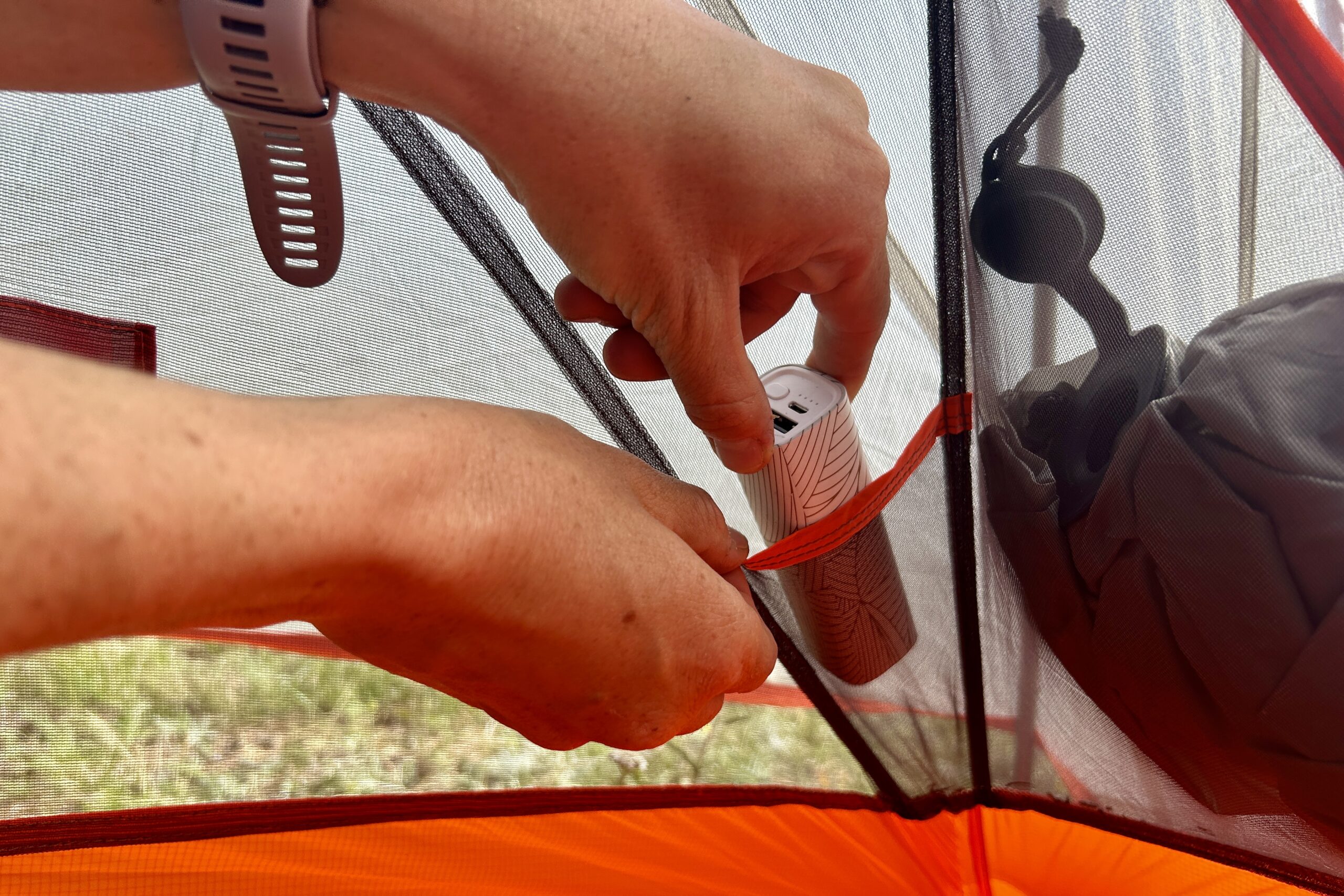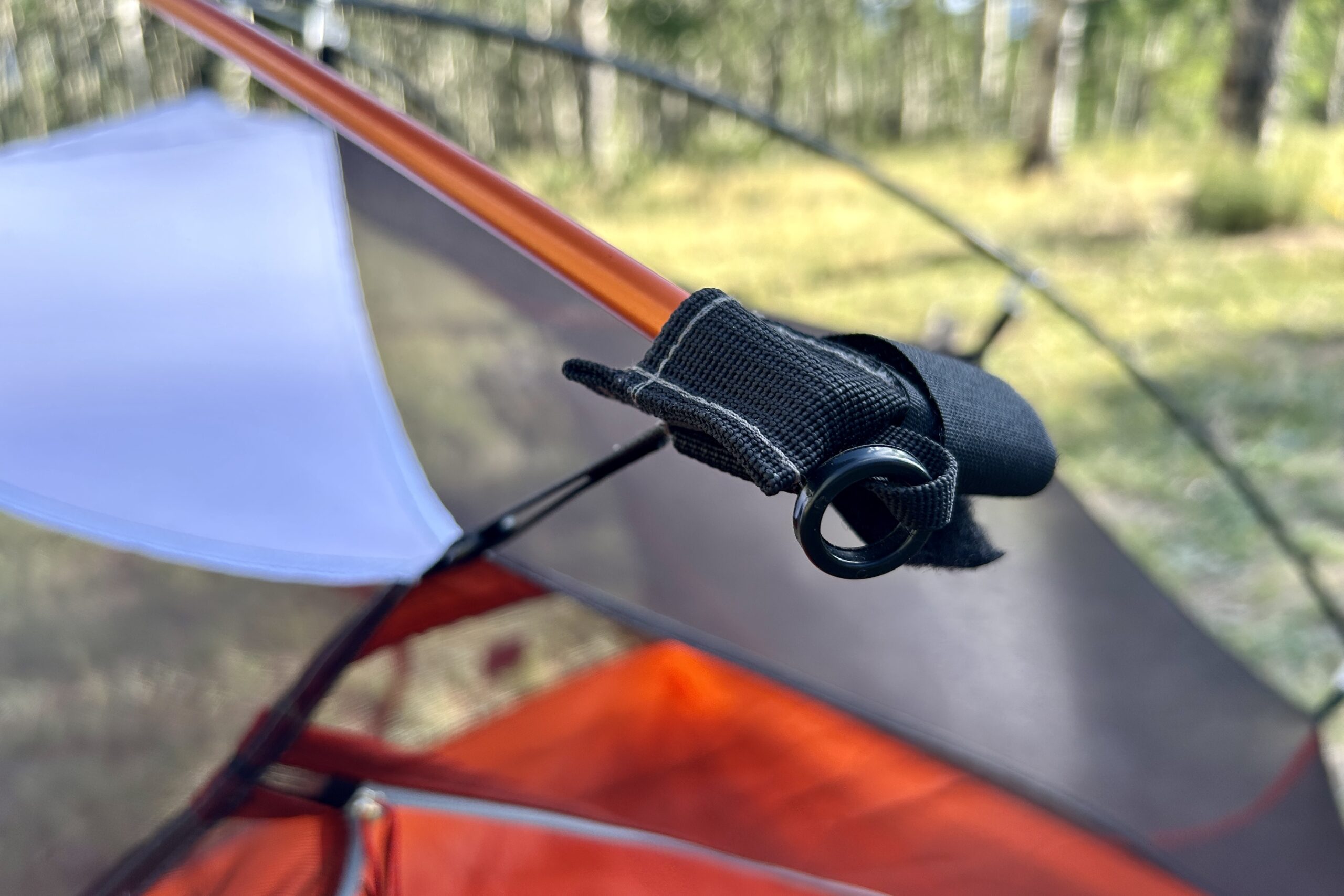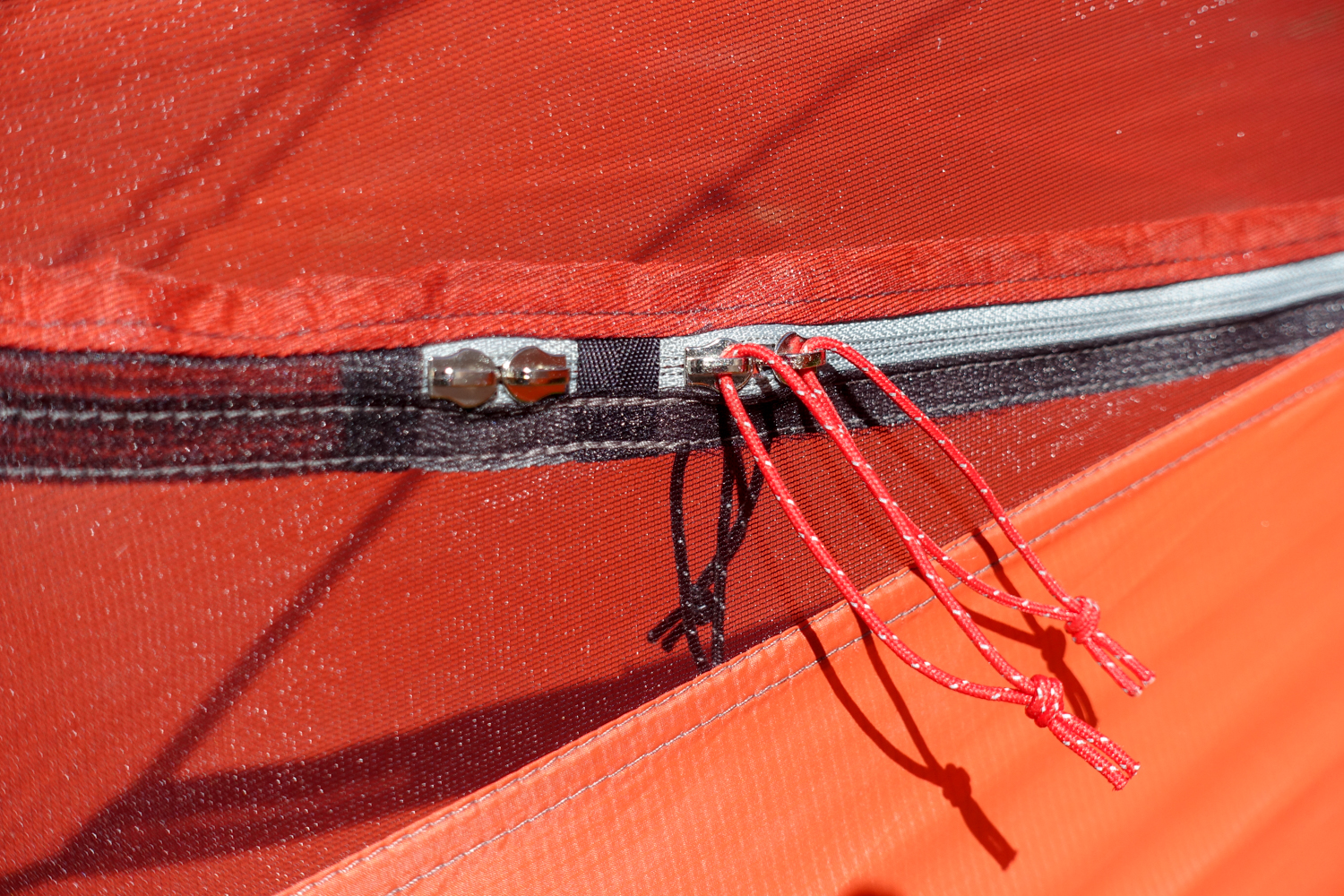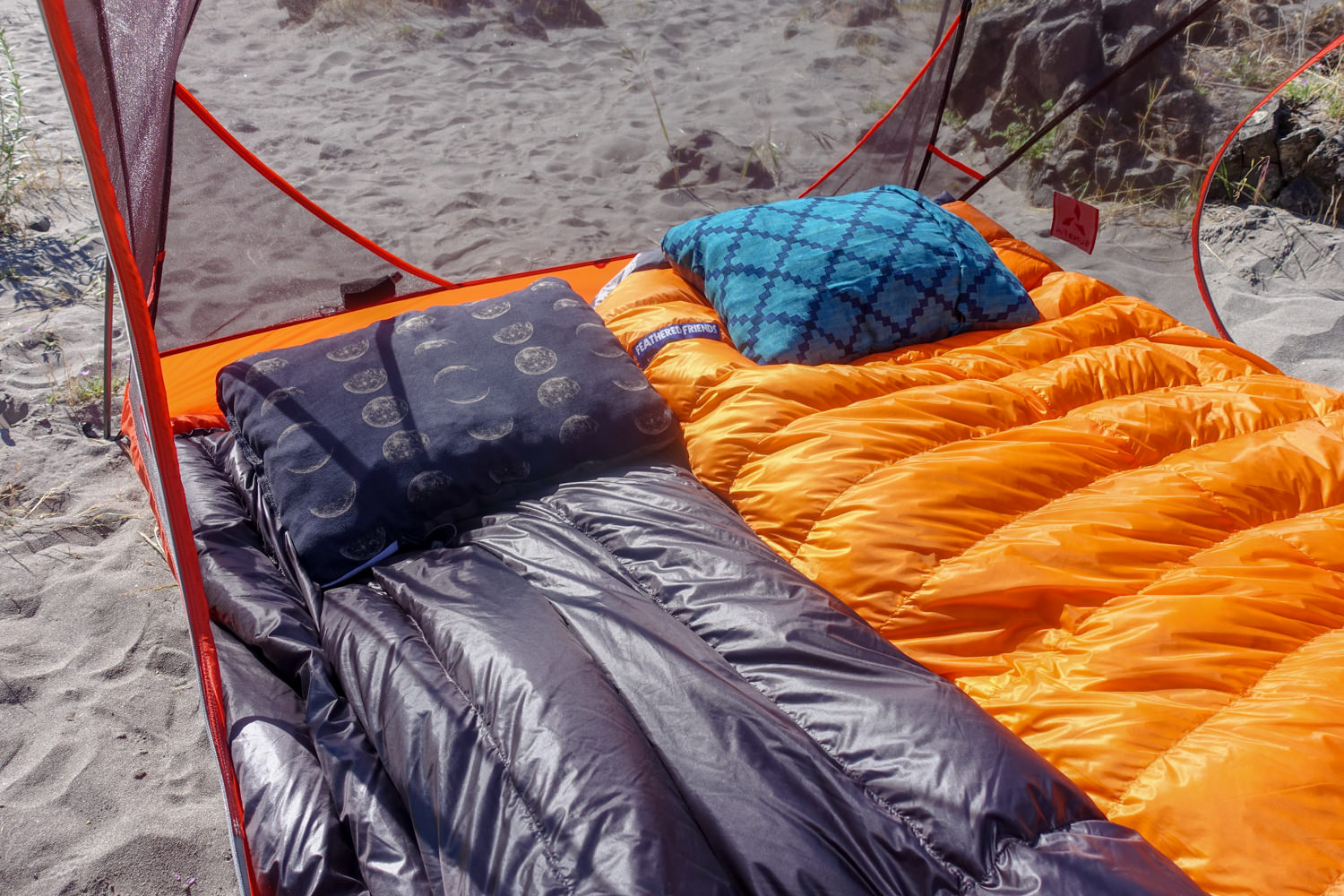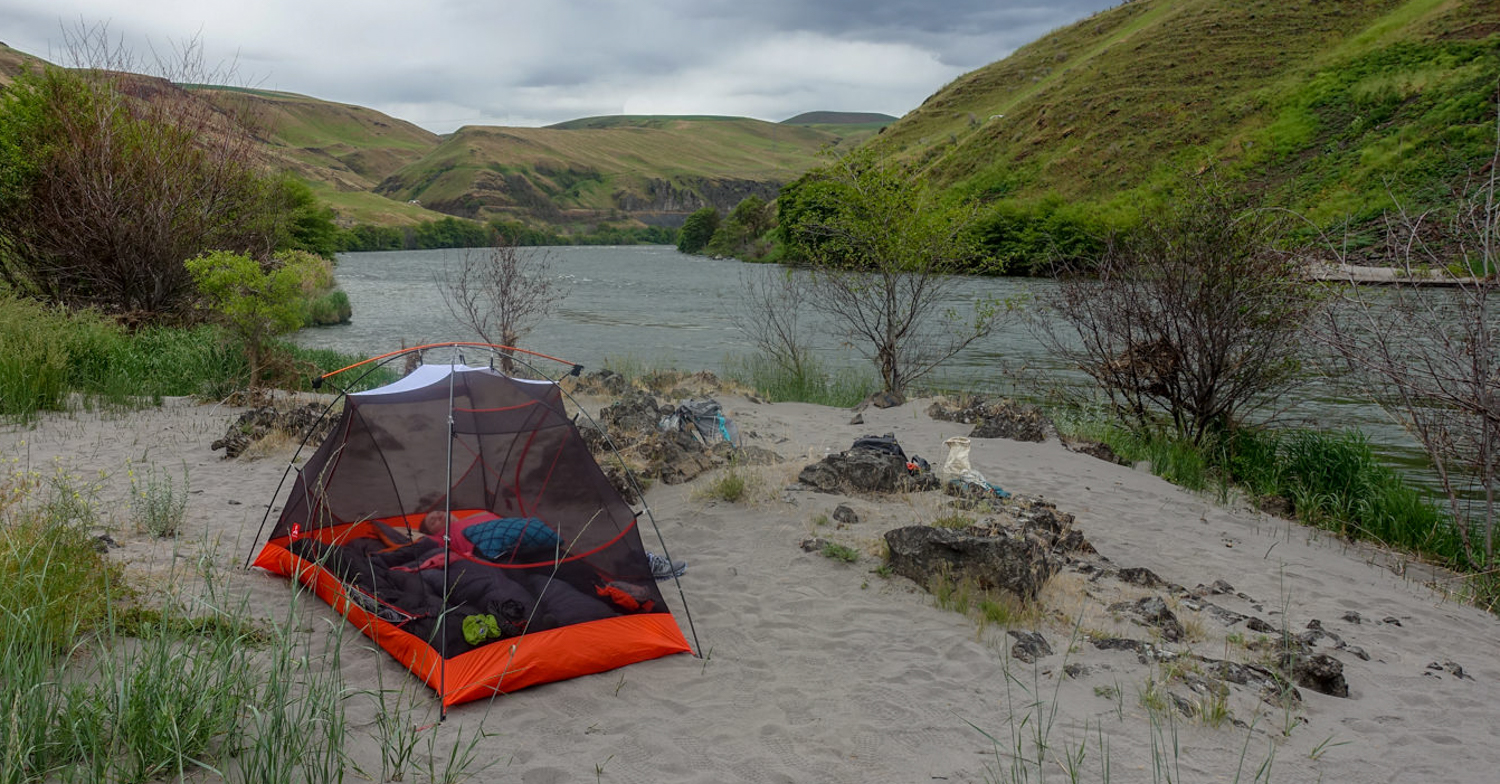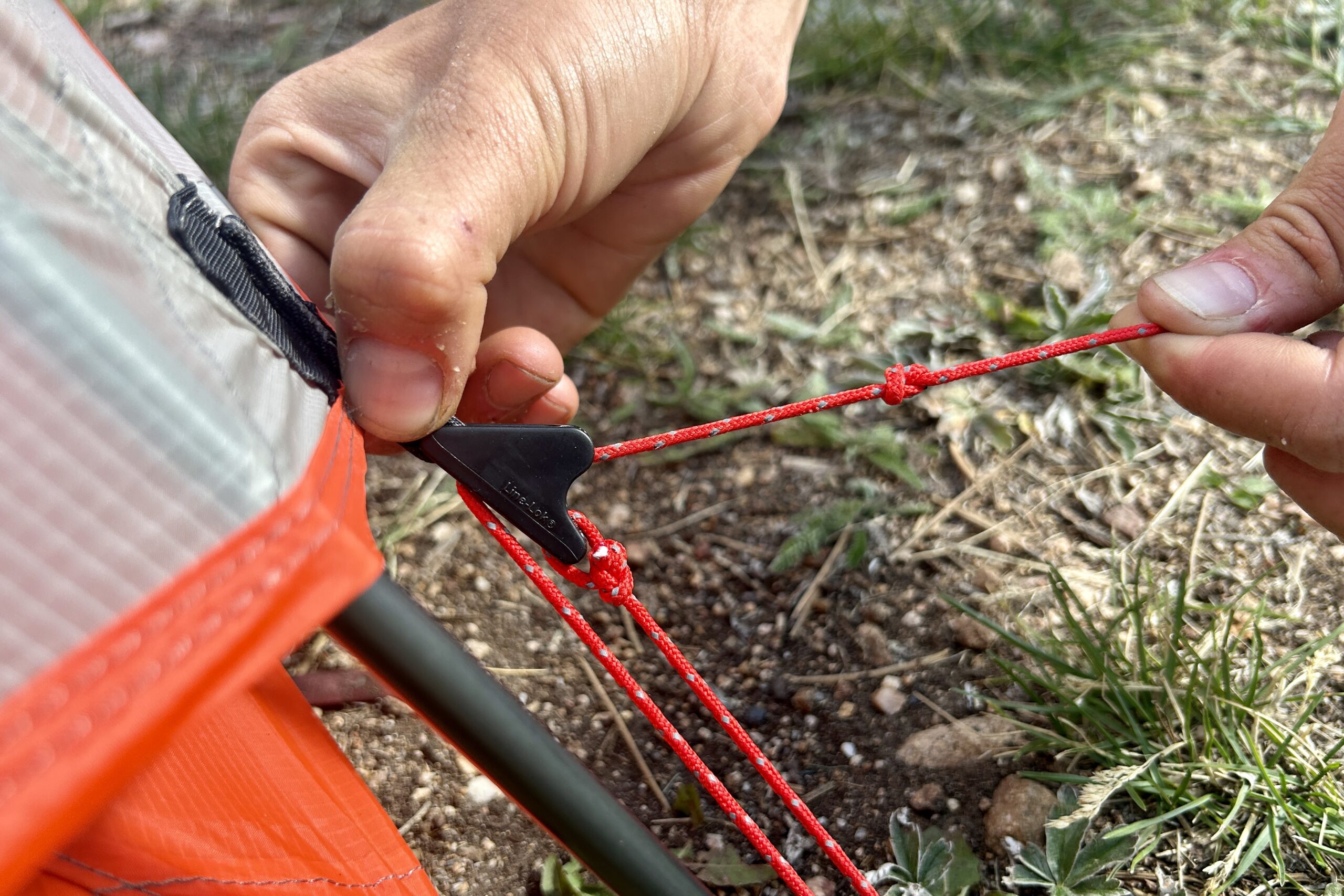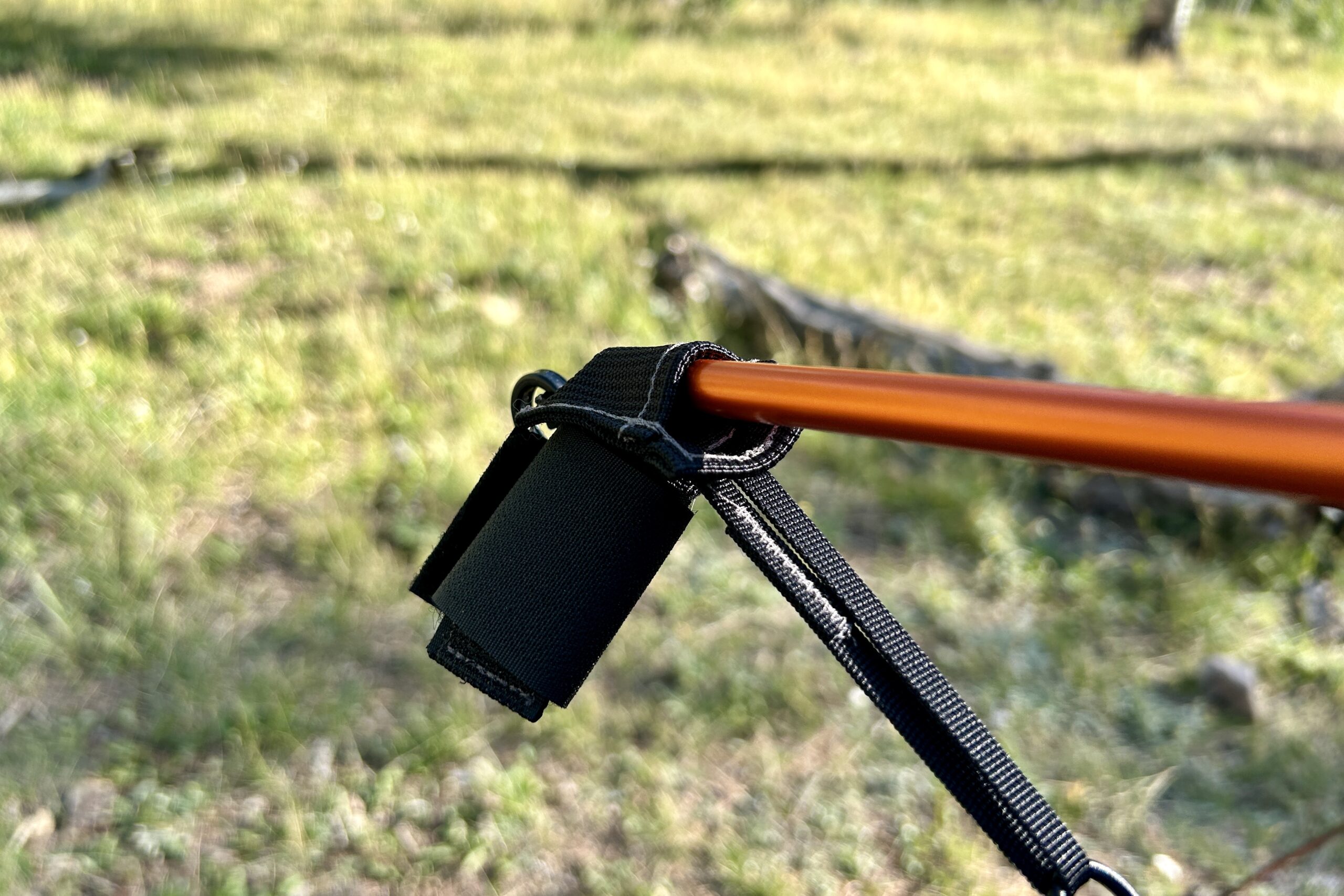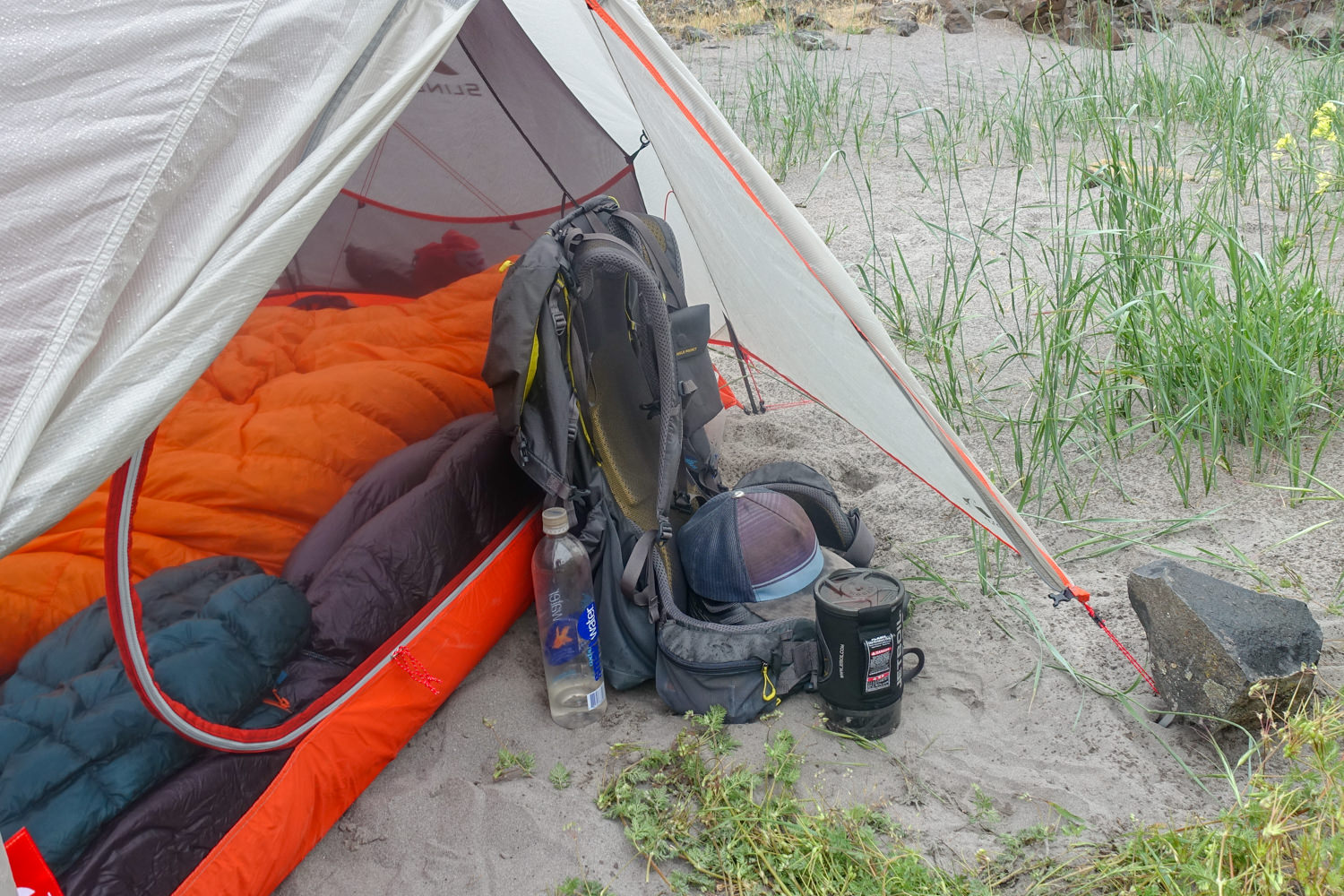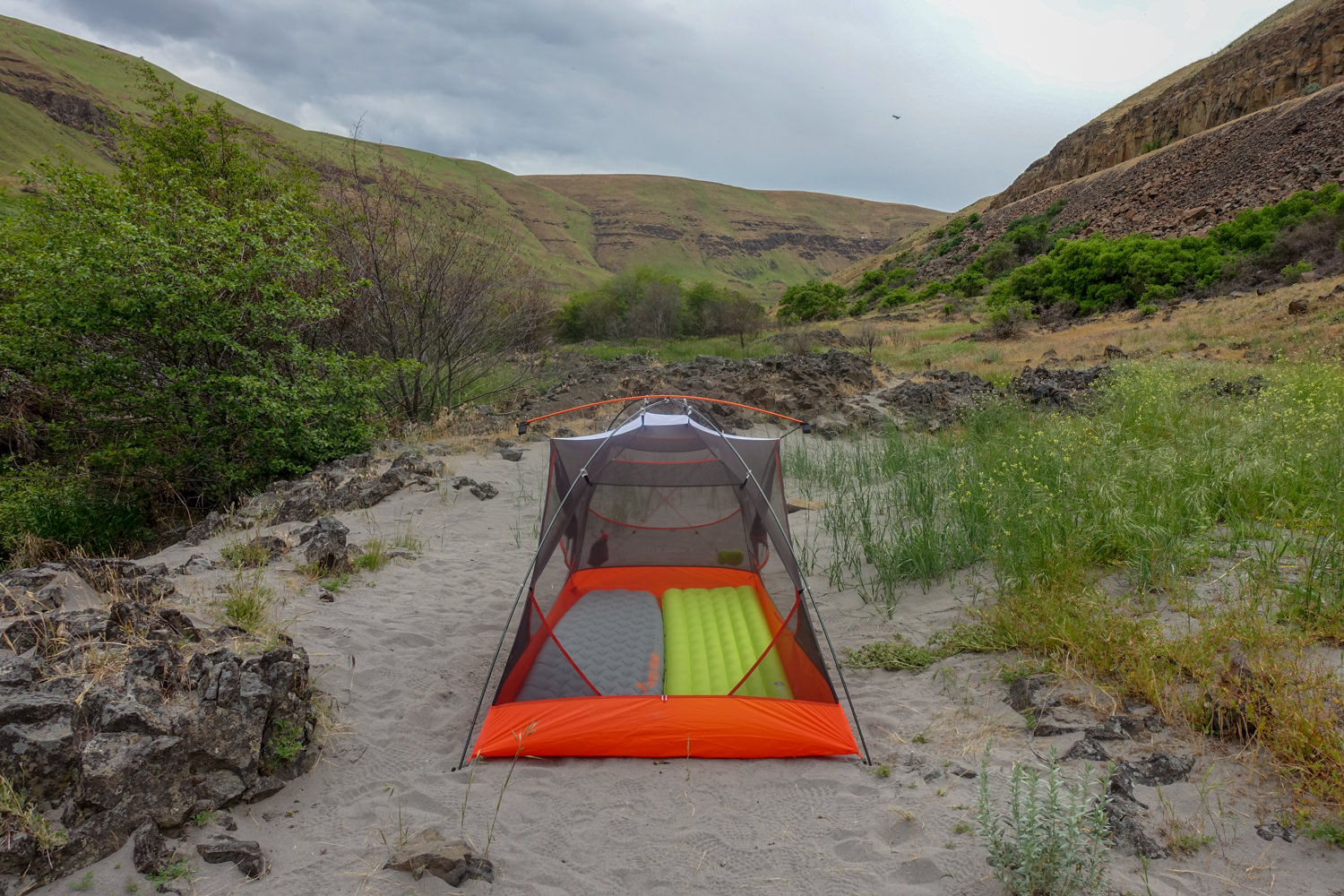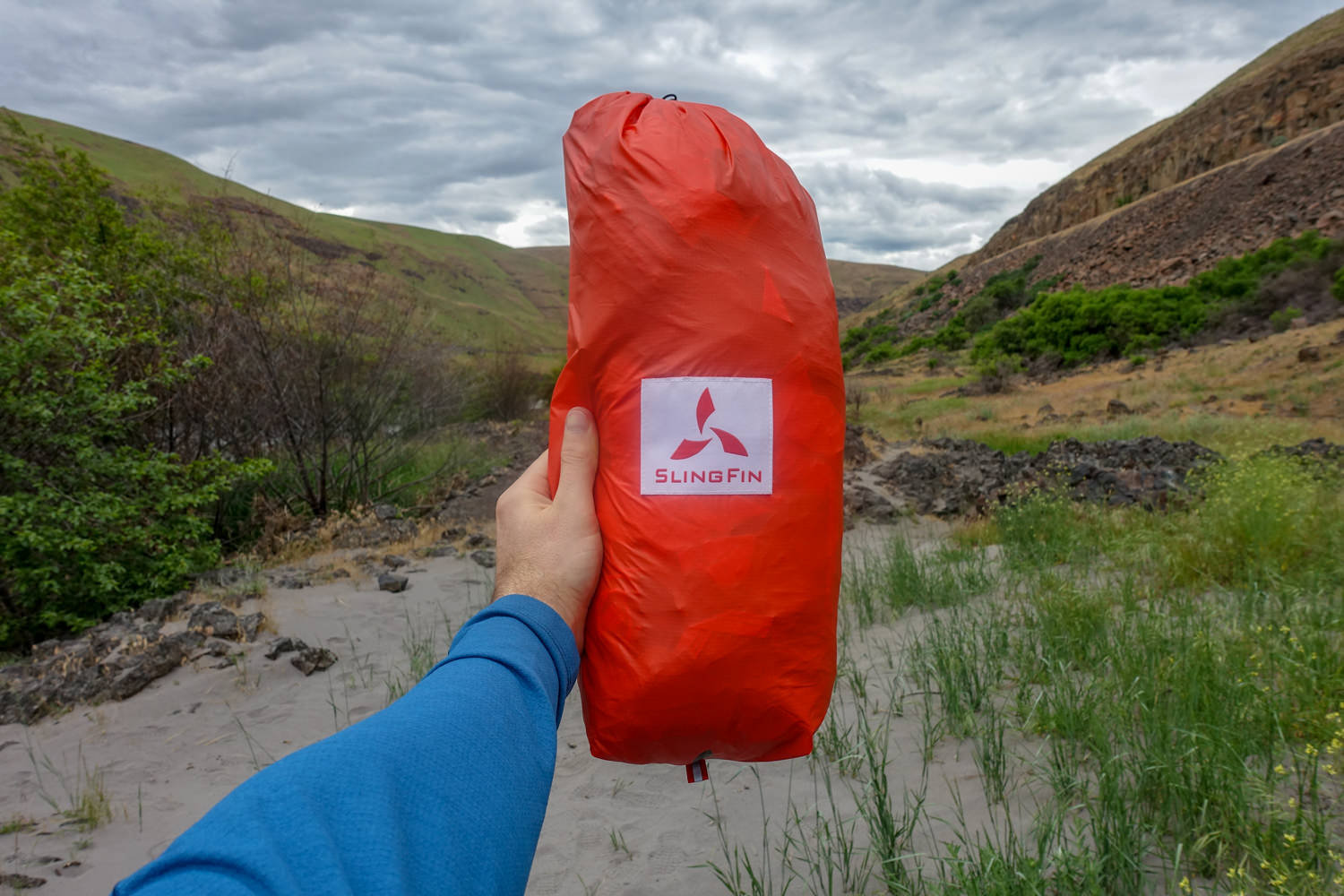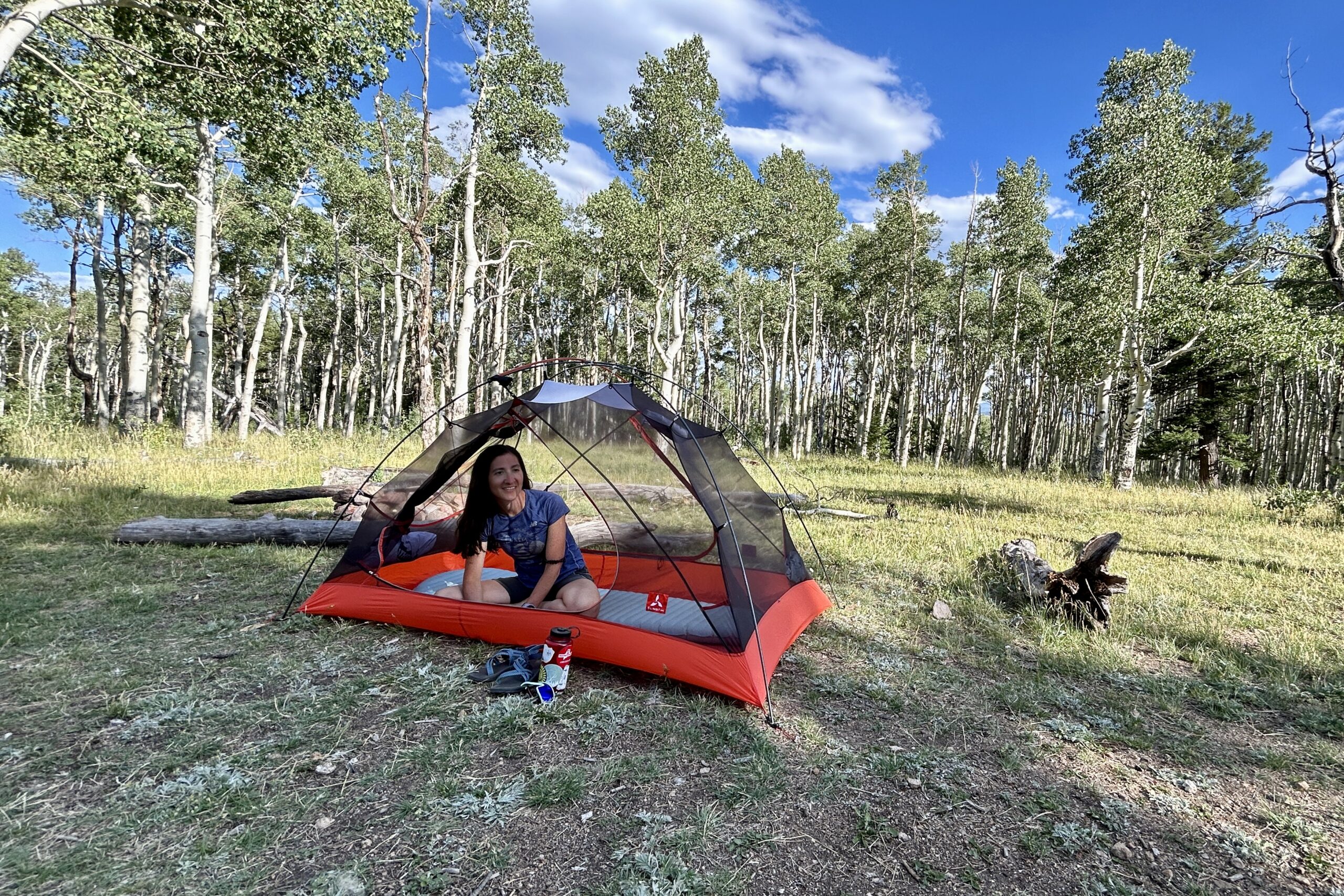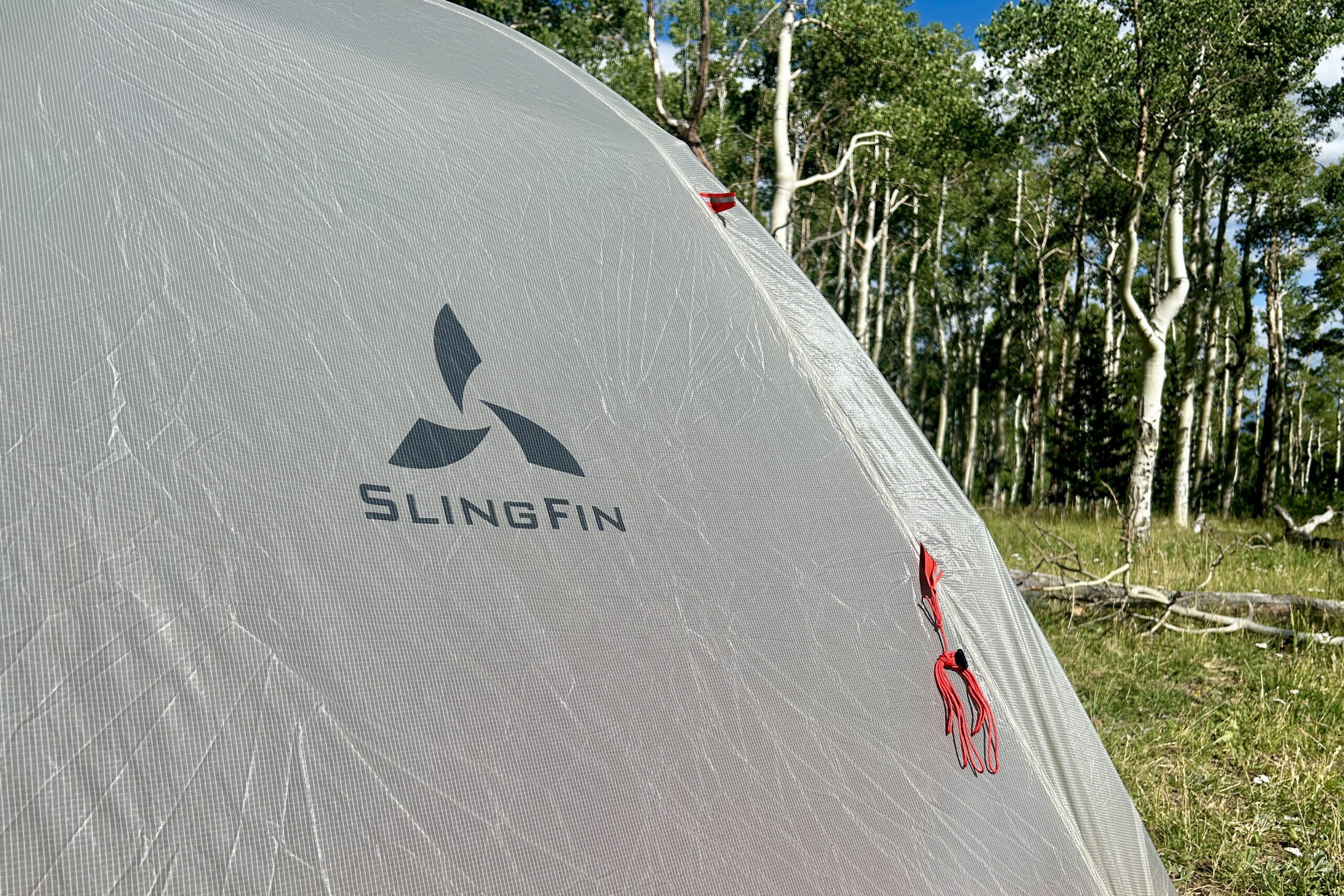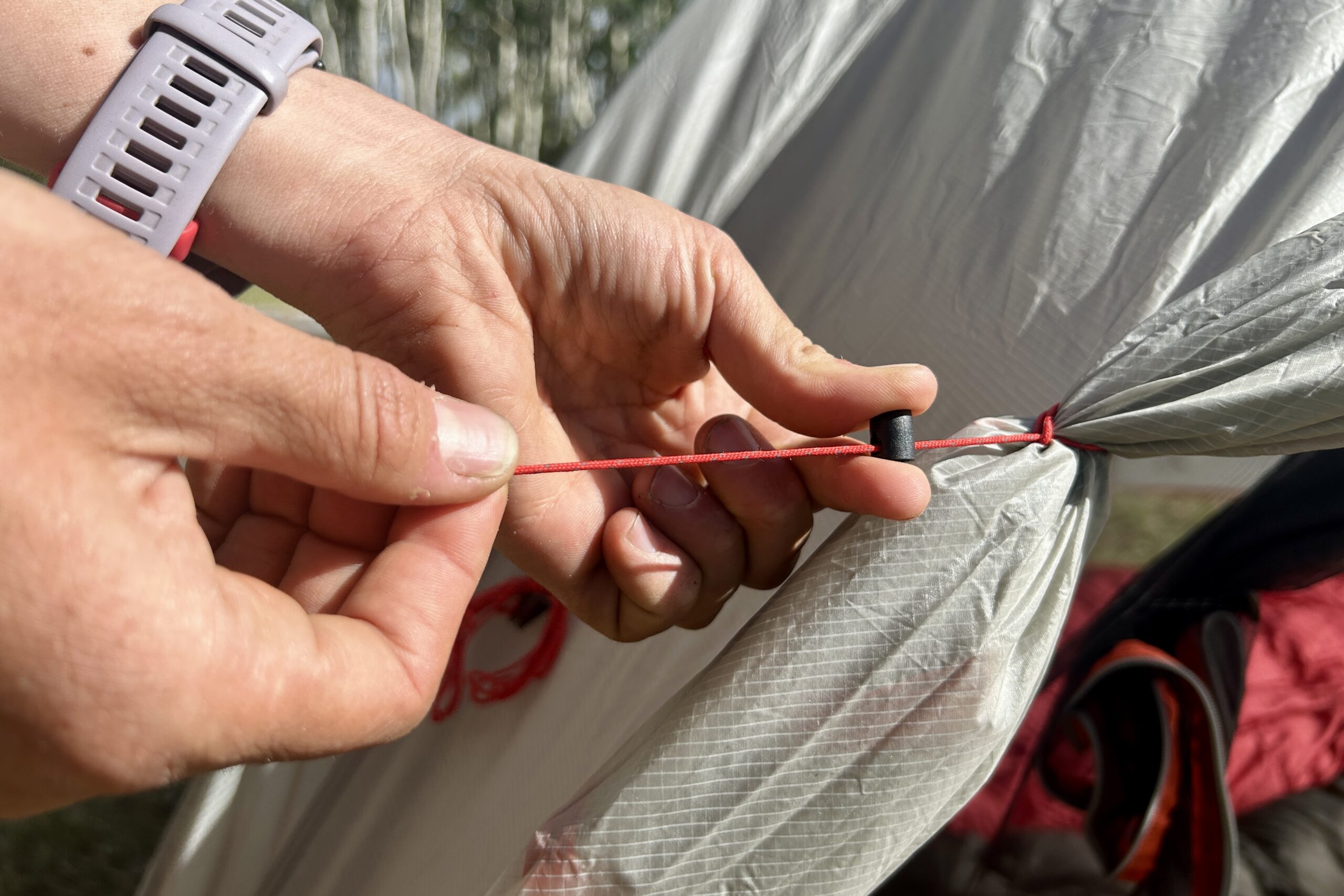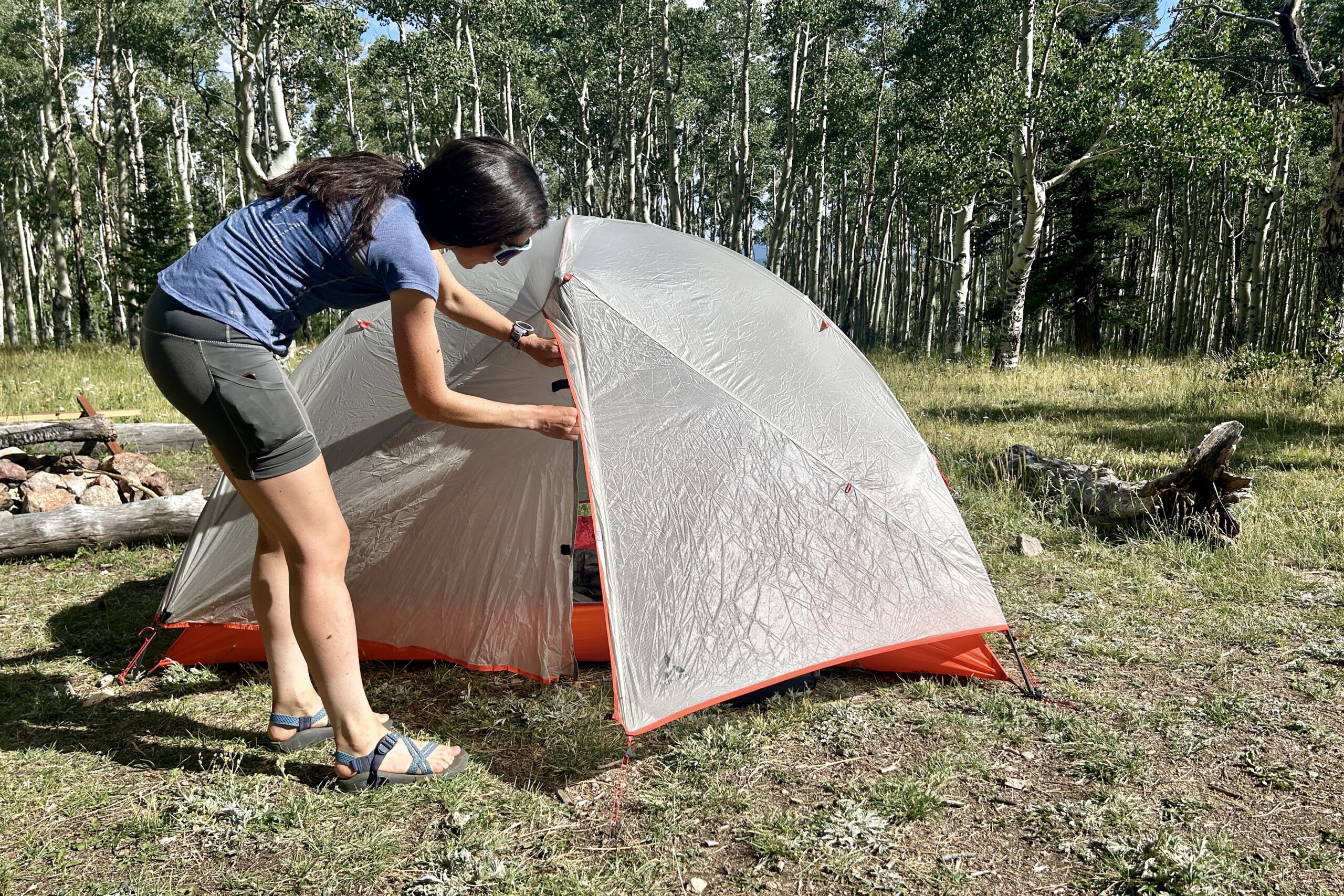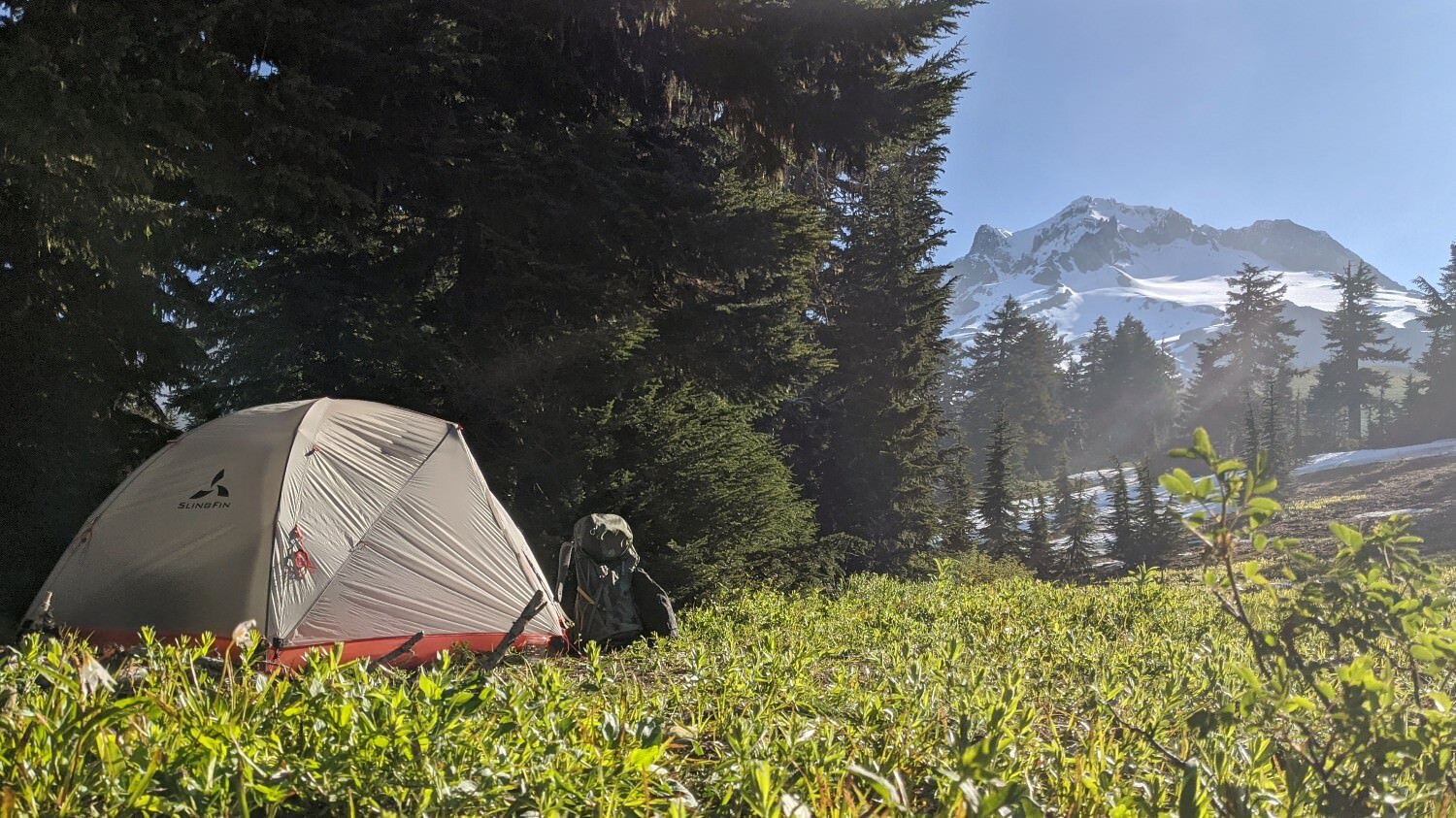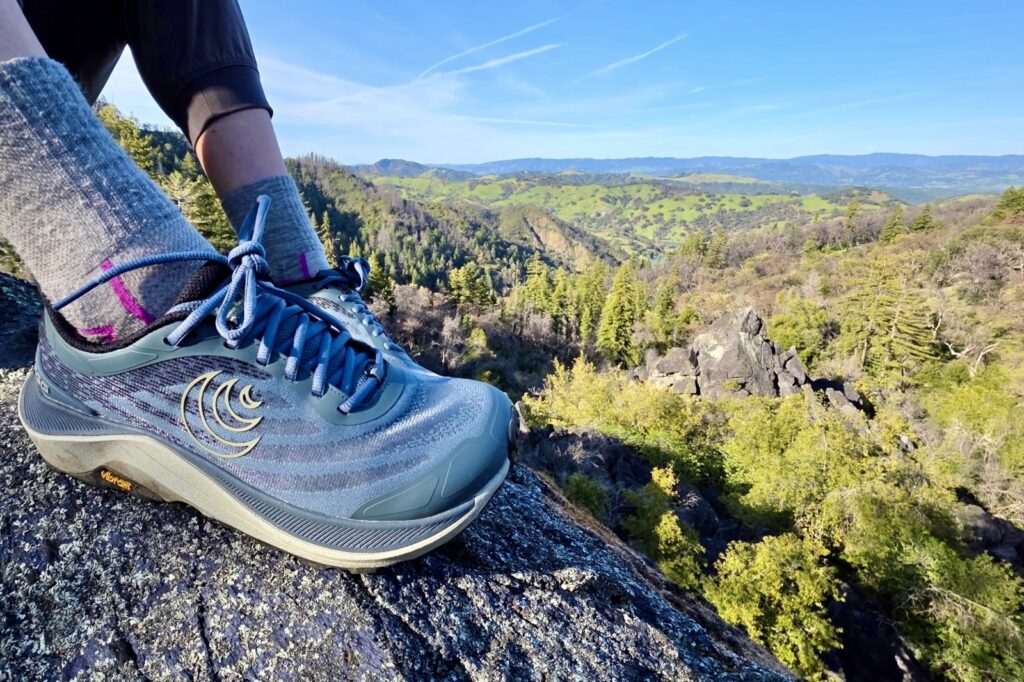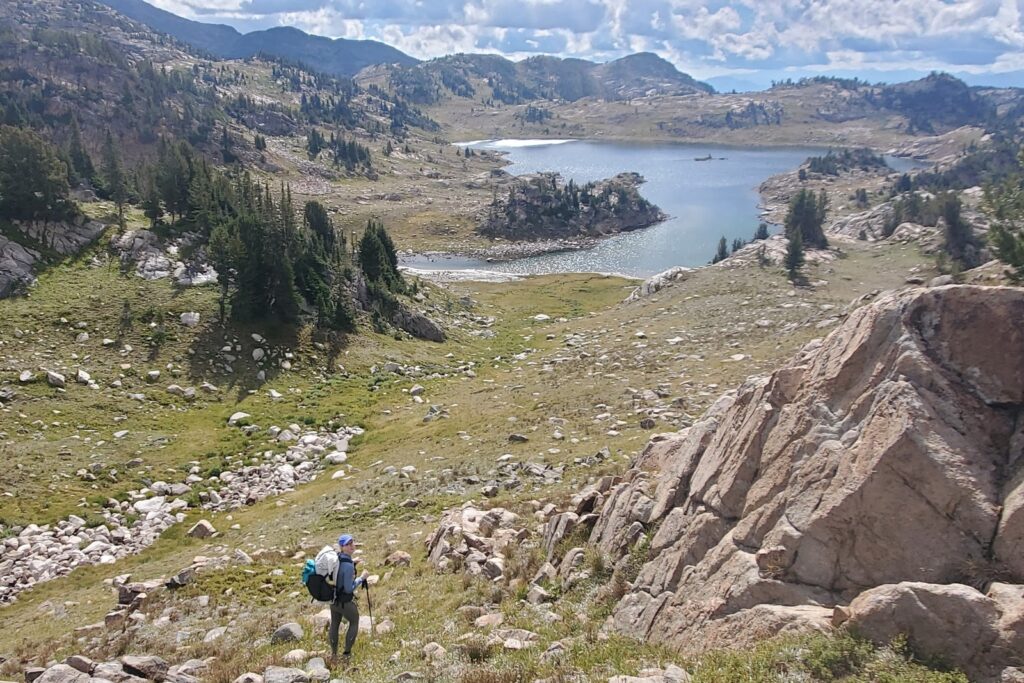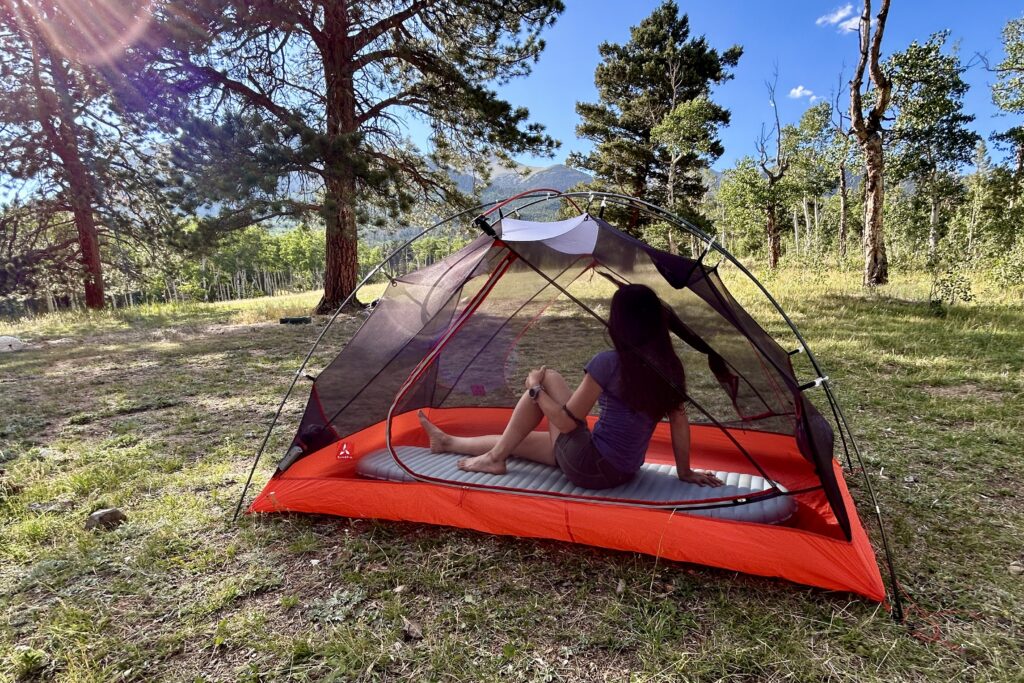
Bottom Line
The SlingFin Portal 2 is our top pick for a lightweight tent for backpacking in the worst weather. Of all the tents on our best backpacking tents list, this shelter excels in stormy weather with features borrowed from 4-season mountaineering designs like reinforced internal guylines, the ability to attach trekking poles for more stability, and thicker dedicated poles. The generous headroom offers above average livable interior space, making it comfortable even when you’re hunkered down in a downpour or snowstorm. Gear Analyst Ian Krammer has used the Portal in icy December winds in the exposed Utah desert and multi-day treks in the deep, snowy backcountry of the Colorado Rockies. The Portal 2 consistently impresses with how it handles strong gusts, driving rain, and hours of snow, without sacrificing livability or packability.
Its sturdy design and features come with some tradeoffs, though. Its floor space is slightly limited, and will feel a bit cramped for backpackers over 6’2”. And, this tent is pricier than some lightweight options – a downside if you’re on a budget or don’t regularly camp in challenging conditions. Still, if you’re looking for a shockingly light and comfy 2-person backpacking tent that’s stout enough to withstand fall, winter, and spring conditions season after season, the Portal 2 is for you.
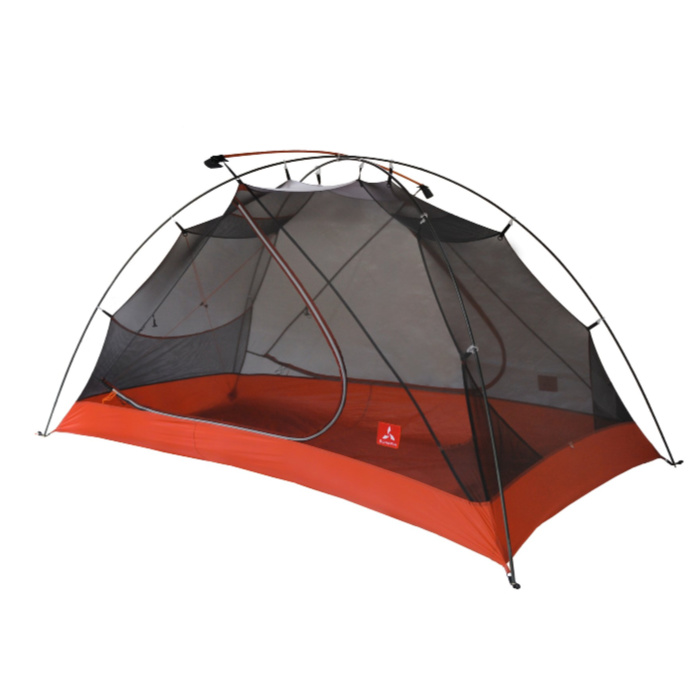
SlingFin Portal 2
Best Lightweight & Sturdy Tent for Harsh Conditions
CleverHiker Rating: 78.5/100
Price: $560
Packed Weight: 3 lb. 5 oz.
Dimensions (LxWxH): 85 x 51/42 x 44 in.
Type: Freestanding
Pros
- Excellent weather protection
- Lightweight
- Roomy interior
- Ample headroom
- Freestanding design is quick/easy to set up
- Useful pockets
- Large doors/vestibules
- Quality construction/materials
Cons
- Expensive
- Rainfly zippers can snag
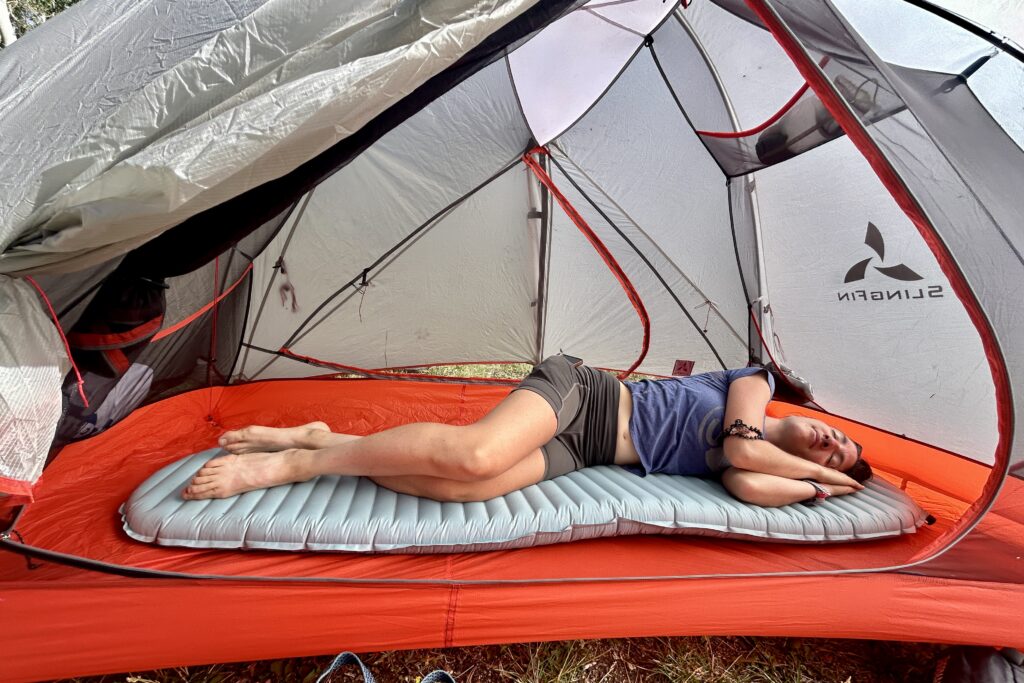
Comfort
The SlingFin Portal 2 is super comfortable thanks to a thoughtful design that puts livability and functionality first. The tent’s wider-than-usual crossbar, high peak height – almost four and half feet! – and near-vertical sidewalls create an open and airy interior that feels much larger than most 2-person tents. It has a minimal taper towards the foot end, making it feel less constricting than similar shelters. We love the many large, versatile pockets in the Portal 2, including two on the ceiling, two at the head, two on the sides, and a single pocket at the foot, so you can easily keep any and all gear organized and off the floor.
The wide doors can be fully rolled back and clipped totally out of the way, which gives excellent ventilation and unobstructed views when weather allows. Two large doors mean each hiker has their own exit and vestibule for gear storage. The downside of this tent comes down to space. The interior is large, but not wide enough to accommodate two wide sleeping pads (check out the Portal 3 if you want extra length and width). Though it’s plenty long, we wouldn’t recommend the Portal 2 for anyone taller than 6’2”. The vestibules are fine and functional, but not as large as we’d like for longer trips that require carrying more gear. Finally, we love the high peak height – especially for ventilation – but this space gets drafty in very cold conditions and makes it difficult to stay warm inside the tent. However, none of these are dealbreakers for us.
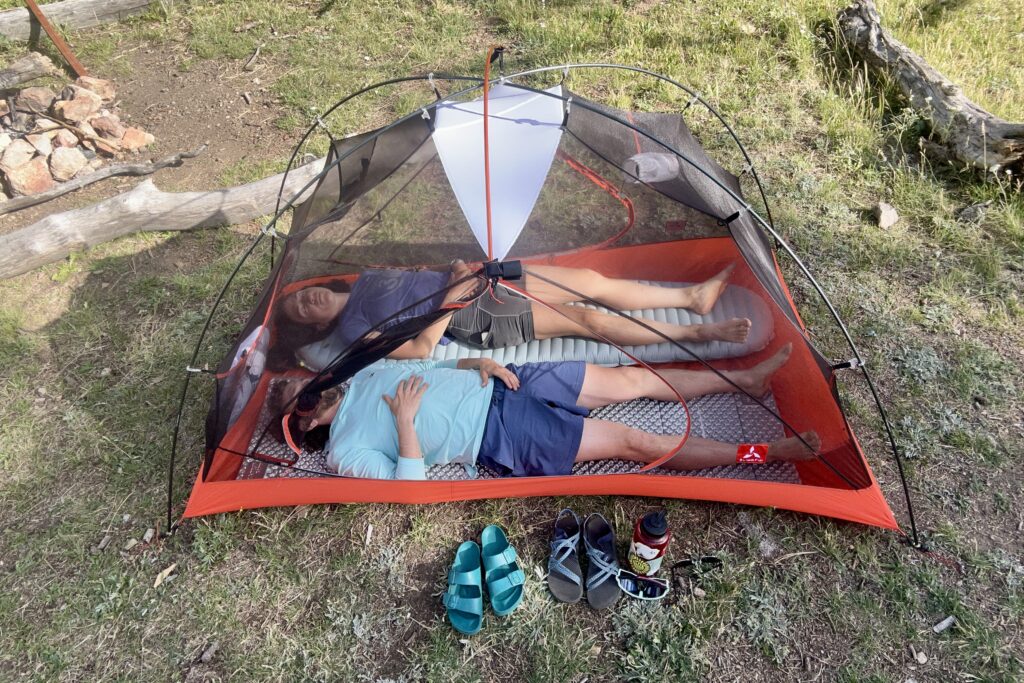
Weight & Packability
Backpackers who want reliable weather protection without the burden of extra weight will love the Portal 2. Weighing in at 3 pounds, 5 ounces, this tent expertly balances weight and durability. The high-performance materials, including premium fabrics with excellent UV and mildew resistance and lightweight but durable poles and zippers, contribute to its sturdiness while minimizing weight. Despite packing a bit longer at 14 inches, the narrow 5-inch diameter of the stuff sack still allows it to fit easily into your backpack and frees up space for other essential gear.
However, the Portal 2 is still several times heavier than the lightest non-freestanding models on the market, which is worth considering if low weight is your highest priority. And it’s worth noting that the Portal 2 is much lighter than traditional 4-season mountaineering tents. For those who prioritize the absolute lightest gear, have smaller backpacks, or only hike in mild summer conditions, this tent might feel a bit too robust. Despite these factors, the weight is still very reasonable given the level of protection and versatility this tent offers.
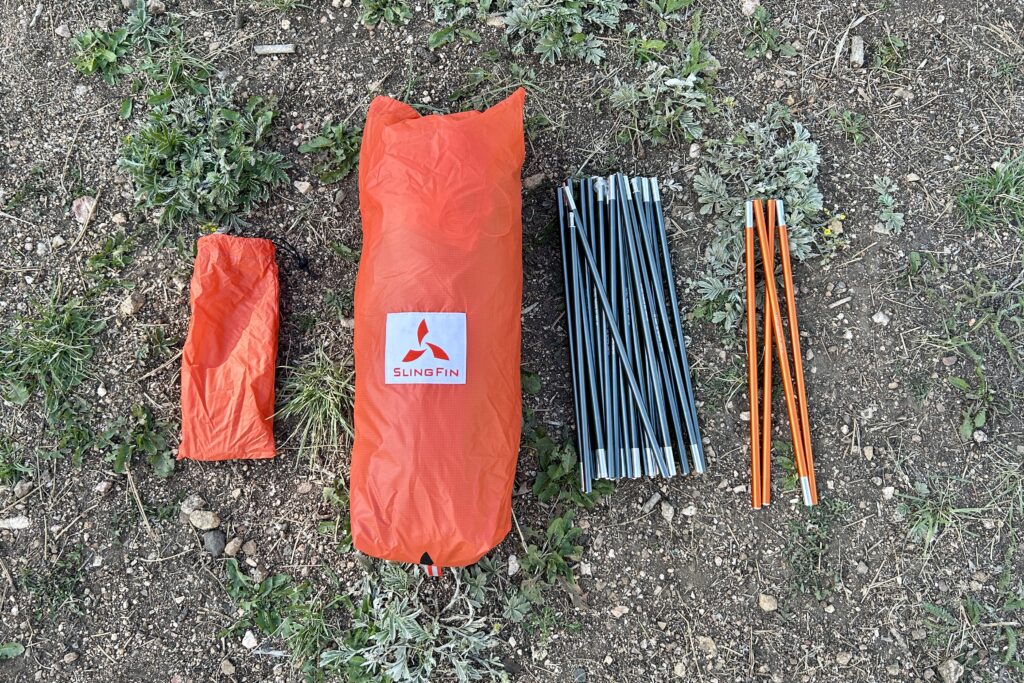
Weather Resistance
The Portal 2 is the king of weather resistance in the backpacking category. Thanks to its slightly thicker poles, internal guylines, and the unique ability to attach trekking poles to its top crossbar for extra stability, this tent is reliable in even the gnarliest gusts, rain, and snow. The design includes a cross-pole frame that twists less in the wind compared to other tents with a central hub, making it incredibly reliable in harsh conditions. The internal guylines transfer wind pressure directly to the stakes, preventing the tent from bending or contorting, and offers exceptional protection against strong gusts.
The rainfly is impregnated with silicone for outstanding water resistance, making for a tent that’s bombproof in storms and lasts for years of rough use. The PE floor fabric is mildew resistant, water resistant, and equally strong. Velcro straps on the fly attach directly to the tent to increase its stability in inclement weather. The tent’s dual side vents, supported by “kickstands,” allow additional airflow and reduce condensation. For folks who want to upgrade to even more weather resistance, SlingFin offers heavier duty poles, a footprint, and a tub floor sold separately. These features make the Portal 2 one of the strongest and most weather-ready lightweight tents available, and our go-to for unpredictable backcountry conditions.
That said, no tent is perfect. The Portal 2’s vent design is effective for moving air around, but the kickstands are located directly above the doors. When the kickstands are up, this design choice makes the doors a bit clunky to enter and exit, and the fly zippers aren’t as smooth. Also, SlingFin doesn’t include enough stakes to fully utilize all its guyline attachment points, so you’ll need to purchase extra nylon cord and stakes separately. The option to seam seal the tent is excellent, although you’ll have to pay more for this service, and the footprint is sold separately. Still, these are small complaints. The Portal 2 is among the strongest and most weather-ready ultralight backpacking tents we’ve ever tested.
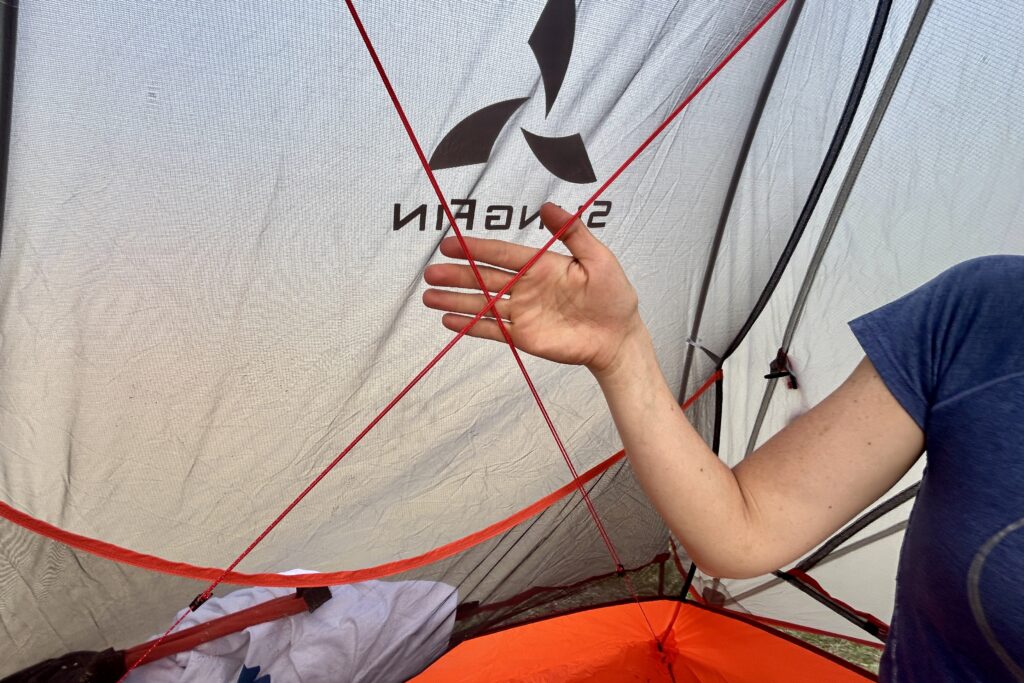
Ease of Setup
The SlingFin Portal 2 shines when it comes to ease of setup – in our experience, a single person can fully pitch it in under three minutes. If you’re looking for a tent that’s quick to deploy when storms are rolling in, this one is for you. The tent’s color-coordinated stake loops and matching reflective tabs on the fly and tent body reduce the chances of mistakes during setup, and we love the pole swivel that connects the long poles to streamline setup. The external guy points are matched to toggles so you can attach the fly directly to the poles to enhance stability. SlingFin includes 10 J-stakes and six external guylines, in addition to the two pre-installed internal guylines to secure your tent to the ground. If you’re a true minimalist and want an even lighter setup, the Portal can be pitched with just the footprint and fly, so you can get out of the weather in less than two minutes.
Although the setup is generally efficient, folks who are new to backpacking tents might find the process a bit more complex compared to classic symmetrical freestanding models, so we recommend setting this tent up once or twice before you’re in the backcountry to understand how the tent fits together. Also, SlingFin only pre-attaches two of the eight guylines – a minor inconvenience when you’re at home, but a major issue in nasty weather. If you’re heading out on a wet, cold, windy trip, you’ll want to attach the guylines ahead of time and save yourself time and stress at the campsite.
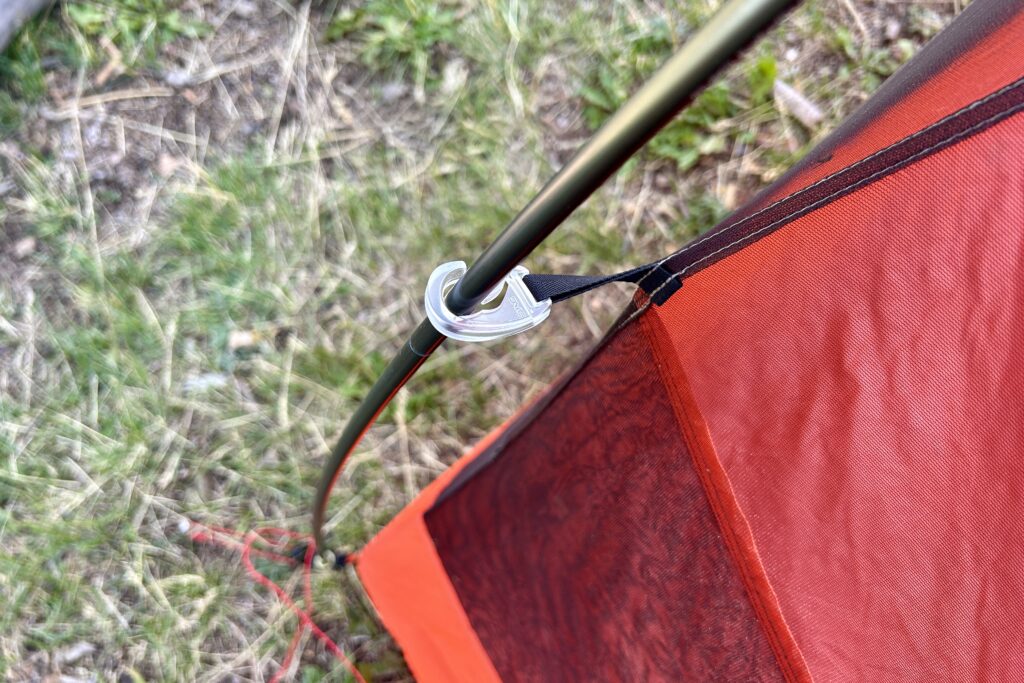
Durability
The SlingFin Portal 2 is a workhorse that will last for years with minimal maintenance. This tent is made with airy but resilient ripstop nylon, featuring solid stitching and reinforced pressure points built to withstand high winds and harsh conditions. The silicone-impregnated fly and floor fabrics resist stretching and sagging when wet to give you a taut pitch even after days of rainy conditions. This advanced material also provides long-term resistance to UV damage and mildew, which means the Portal is likely to outlast tents made with conventional PU-coated fabrics. The zippers are smooth and reliable, and SlingFin includes two extra built-in zippers to use if the primary ones fail, extending the tent’s lifespan without pricey repairs. Additionally, the pre-installed internal guylines give the Portal 2 unmatched lateral stability, making it durable even through hours of windy gusts, where other tents come up short.
There are a few downsides when it comes to durability. The Portal’s nylon fabric is lightweight and strong, but you’ll need to be careful when handling it to avoid punctures and tears, especially in rugged environments. The tent’s stock 8.7 mm poles are sturdy for most conditions, but come up a bit short in extreme conditions like heavy snow and 35+ mph winds, which is why SlingFin offers a heavy-duty pole set upgrade. Furthermore, the Portal’s floor is durable, but you might want to purchase the footprint to protect it from abrasive surfaces and extend its longevity.
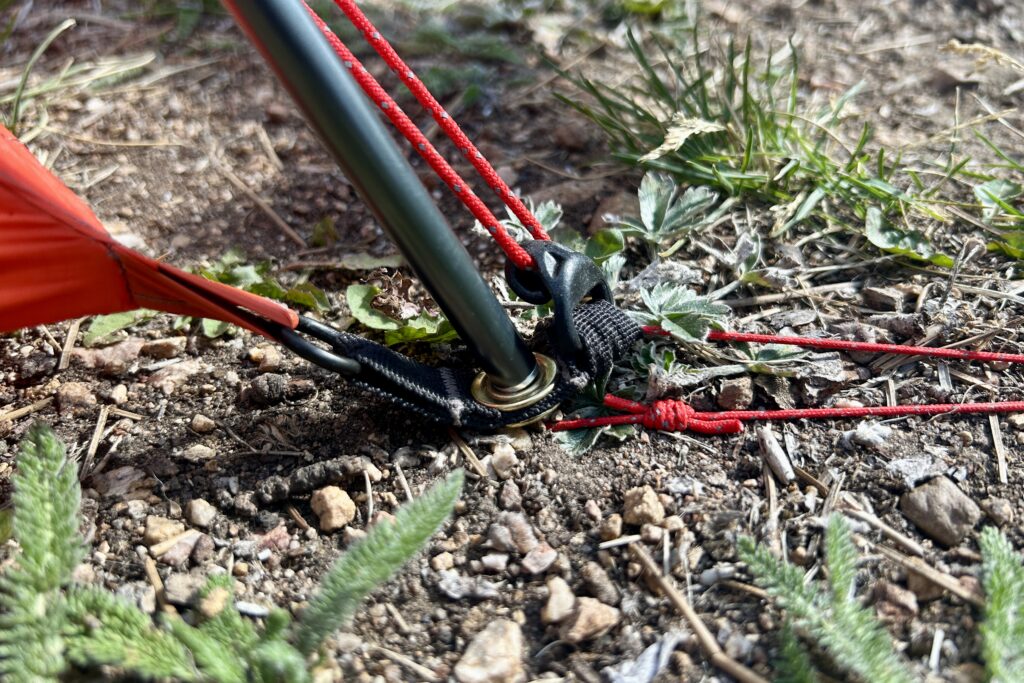
Should You Buy the SlingFin Portal 2?
The SlingFin Portal 2 is for serious year-round backpackers and mountaineers who prioritize durability, weather resistance, and stability in a lightweight package. It’s a home run for those who backpack in harsh, windy, or rainy conditions, where the tent’s reinforced pressure points, high-quality ripstop nylon, and internal guy lines truly excel. The Portal 2’s design, including the ability to attach trekking poles for added support and the option to upgrade to heavier-duty poles, makes it perfect for long-distance hikers and those who need a reliable shelter for multi-day trips in rough shoulder season conditions, above alpine in summer storms, or even mild winter trips. The tent is also perfect for folks who want longevity out of their tent, with durable materials that resist UV damage and mildew, and unique bonuses like built-in backup zippers.
However, the SlingFin Portal 2 isn’t the best choice for ultralight backpackers who want the absolute lowest weight possible and hike mostly in the summer. While very light for its strength and stability, this tent is heavier than some ultralight options on the market. Plus, the perfect setup for you might require extra steps, like purchasing additional stakes and guylines for top performance.
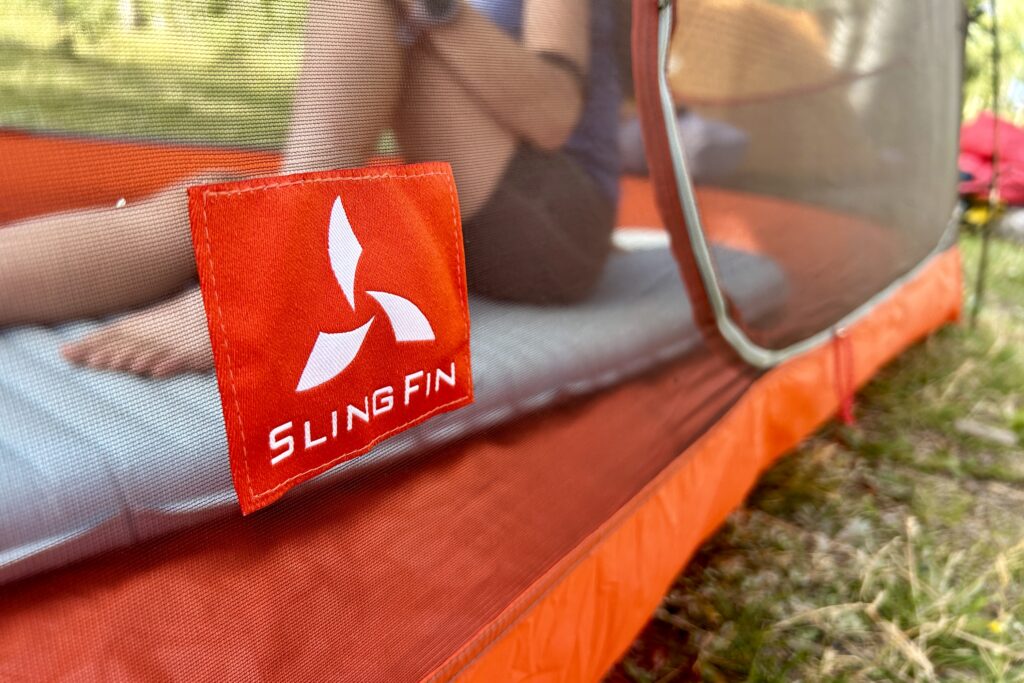
What Other Backpacking Tents Should You Consider?
NEMO Hornet Osmo 3 Review: The NEMO Hornet Osmo 3 shares a similar weight, price, and attention to detail as the Portal 2, making it a strong competitor in quality and livability. The Hornet 3 is semi-freestanding and much more spacious than the Portal, but it doesn’t offer the same level of weather resistance, making it less ideal for extreme conditions but more comfortable for warm-weather camping.
Big Agnes Copper Spur HV UL2 Review: The Big Agnes Copper Spur HV UL2 is slightly lighter than the Portal 2, although it shares similar dimensions, ease of use, and excellent craftsmanship. It lacks the same weather resistance and durability features as the Portal, but offers larger pockets, a slightly better price, and bigger vestibules, making it a solid option for less demanding environments.
MSR Hubba Hubba 2 Review: The MSR Hubba Hubba is similar in weight, dimensions, price, and is also a freestanding tent, which matches the Portal 2’s versatility. It has fewer pockets, larger vestibules, and offers competitive weather resistance, though not quite on par with the Portal 2 in our opinion. The Hubba has a fully rectangular floor, offering more floorspace, but its headroom feels more cramped when sitting up.


